2 position Calling-on signals
| When a home signal is at stop and it is desired to run a loco or train into an already occupied track, the signalman had to hand signal (green flag or green light) the driver past the home signal at stop. Calling-on arms were used in place of the hand signal to tell a driver he could pass the home signal at stop but that the track may be occupied. Essentially the calling-on at proceed only told the driver that the points were set for the move.
Calling on signals are always found under a home signal, they are similar to disc signals in that they do not tell a driver if the track is clear or not. The big difference is that a calling on only applies to the same track as the home signal above it. Because they are always used with a home signal they do not have a "stop" position. (at night there is no light when the arm is horizontal) They were used to bring a train onto an occupied mainline and were often used at single line crossing loops that had been extended enough that it was possible to fit two trains. Another use was at larger locations where a loco could be signalled onto its train. Such as when running around a passenger train or a pilot picking up a rake of wagons left on a mainline. |
||||||||||||||||
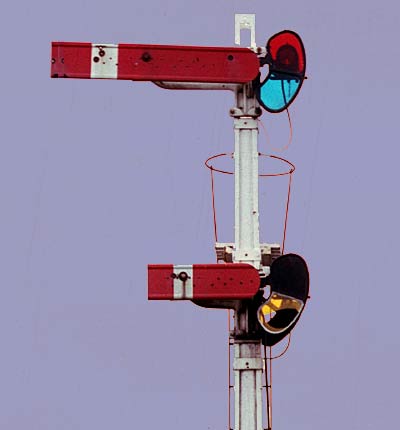 |
||||||||||||||||
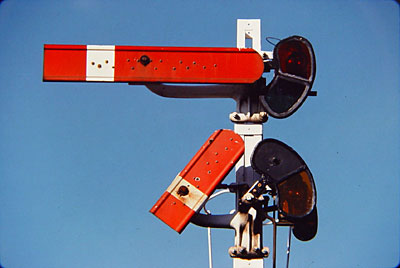 |
||||||||||||||||
|
Calling-on signal at the "normal" position
|
Calling-on signal at the "proceed" position
photo coutesy Peter J. Vincent |
|||||||||||||||
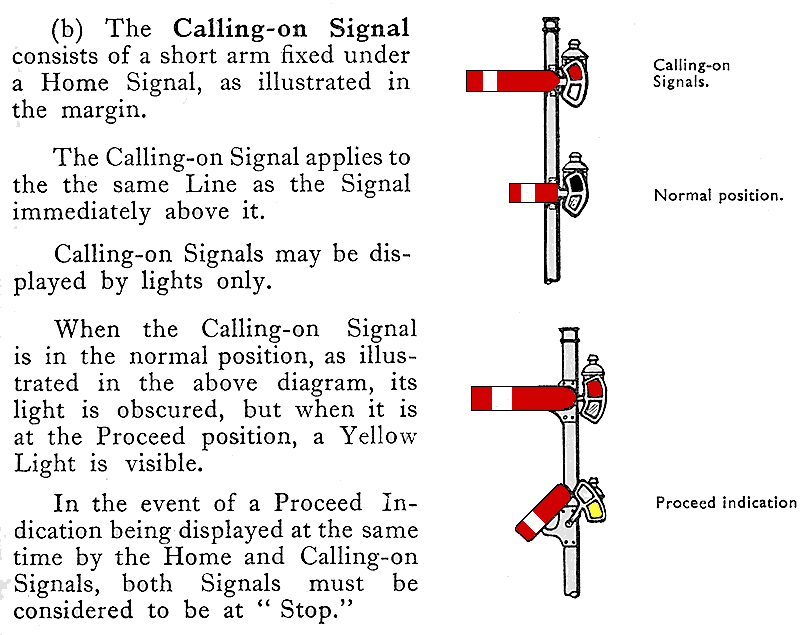 |
||||||||||||||||
|
Note, Until the 1950's calling on signals showed a green light at "proceed"
|
||||||||||||||||
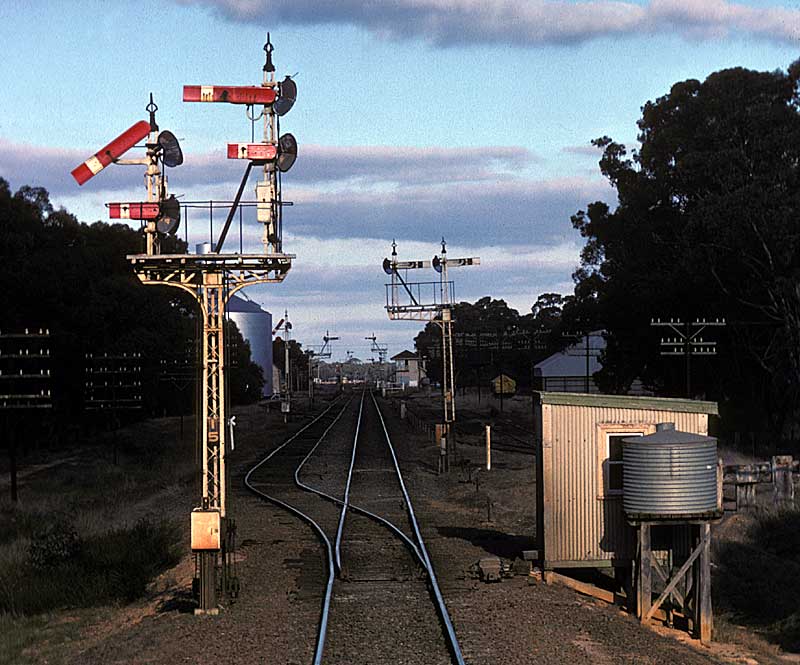 |
||||||||||||||||
| The up home arrivals at Glenorchy were a typical example of the use of calling-on signals at a single line crossing station. The hut next to the water tank housed the relays associated with the power switch. These points were motor operated when Glenorchy was lengthened. Normally, point rods would have operated the points but due to the distance from the signalbox to the points they could not be manually operated, hence the dual control points. (The dual control machine is on the ground between the hut and the rail)
Notice that in the description of the calling-on in the diagram below, the words used are "to No 2a track" unlike the home above it which says "to No 2a track to post 13" All that a calling-on at proceed told a driver was that the points were set for the movement. Contrasting to a home signal at proceed which told the driver that the track was clear. Another benefit was that when a home signal failed the calling-on could be used instead of issuing a caution order. (In pre radio days a caution order had to be physically delivered to the driver by the signalman). |
||||||||||||||||
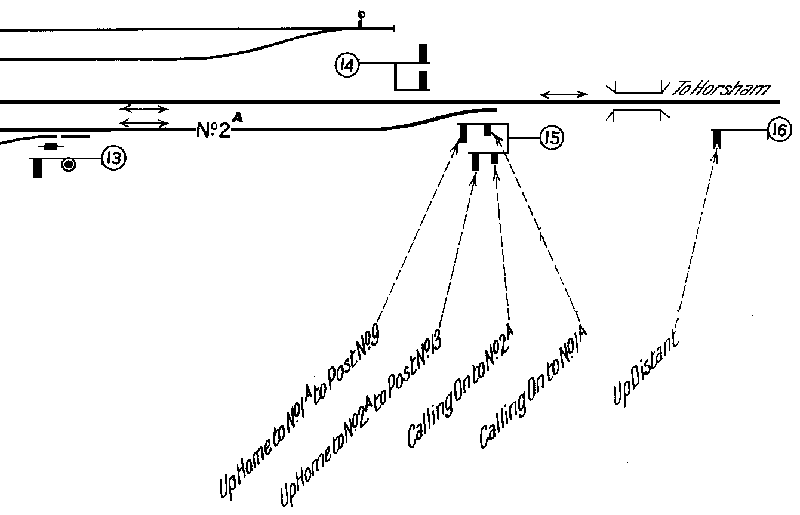 |
||||||||||||||||
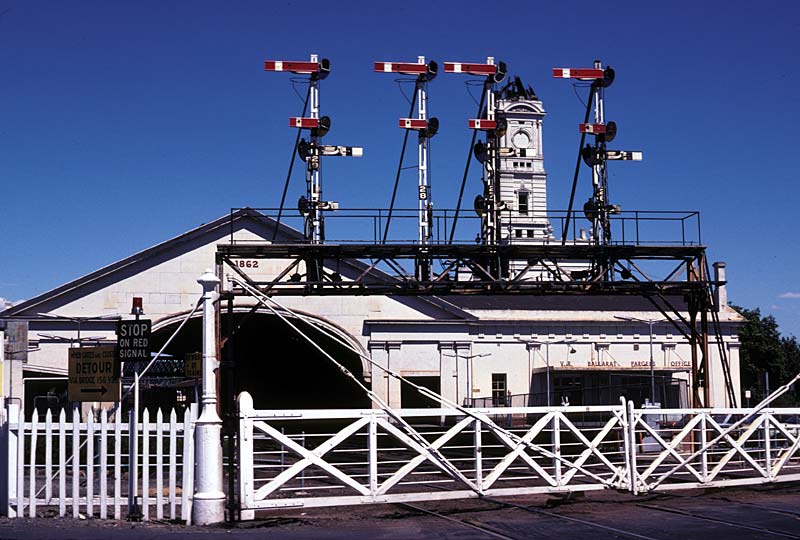 |
||||||||||||||||
|
Standard 2 position practice is being adhered here with a home signal for each running line but with the addition of calling-on arms for each track. Rakes of wagons were commonly left in 2 and 3 track, without calling-on arms the signalman would have to hand signal a loco past the home signal. (Of course the home signal could not be placed to proceed with the track occupied) For situations like this, calling-on's were very convenient
|
||||||||||||||||
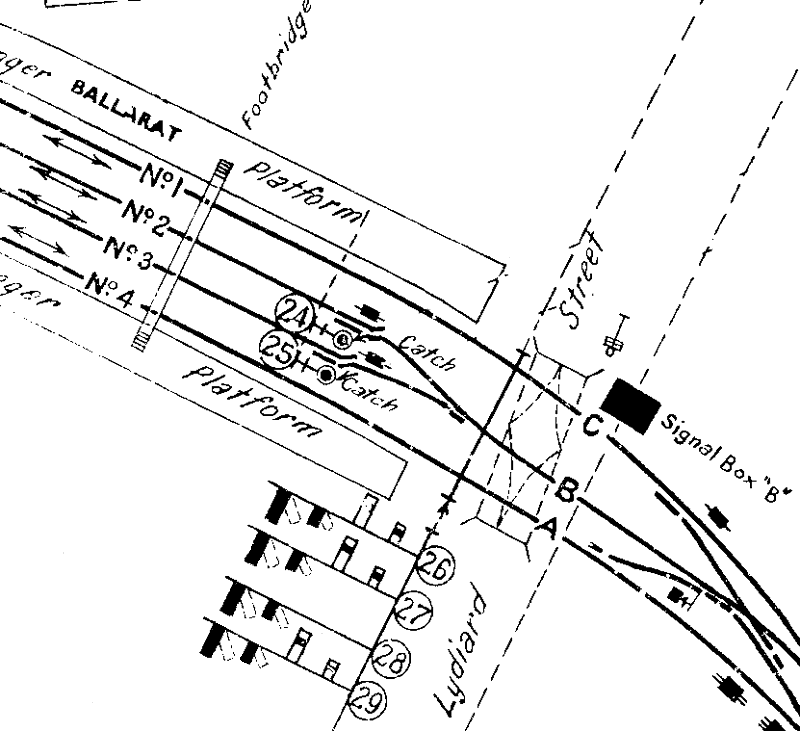 |
||||||||||||||||
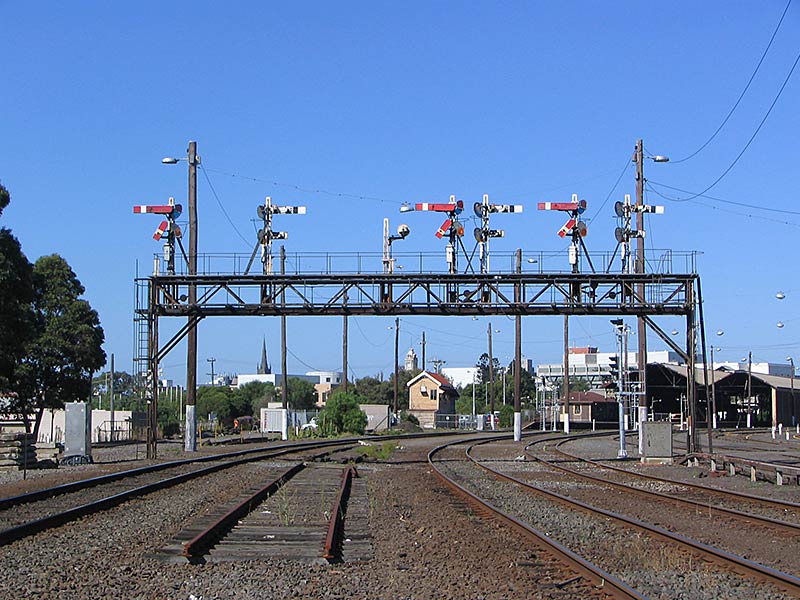
| Geelong, looking towards the station with all three calling on arms at "proceed" photo 2004. For a diagram of this signal arrangement click here.
Photo courtesy Rob O'Regan |